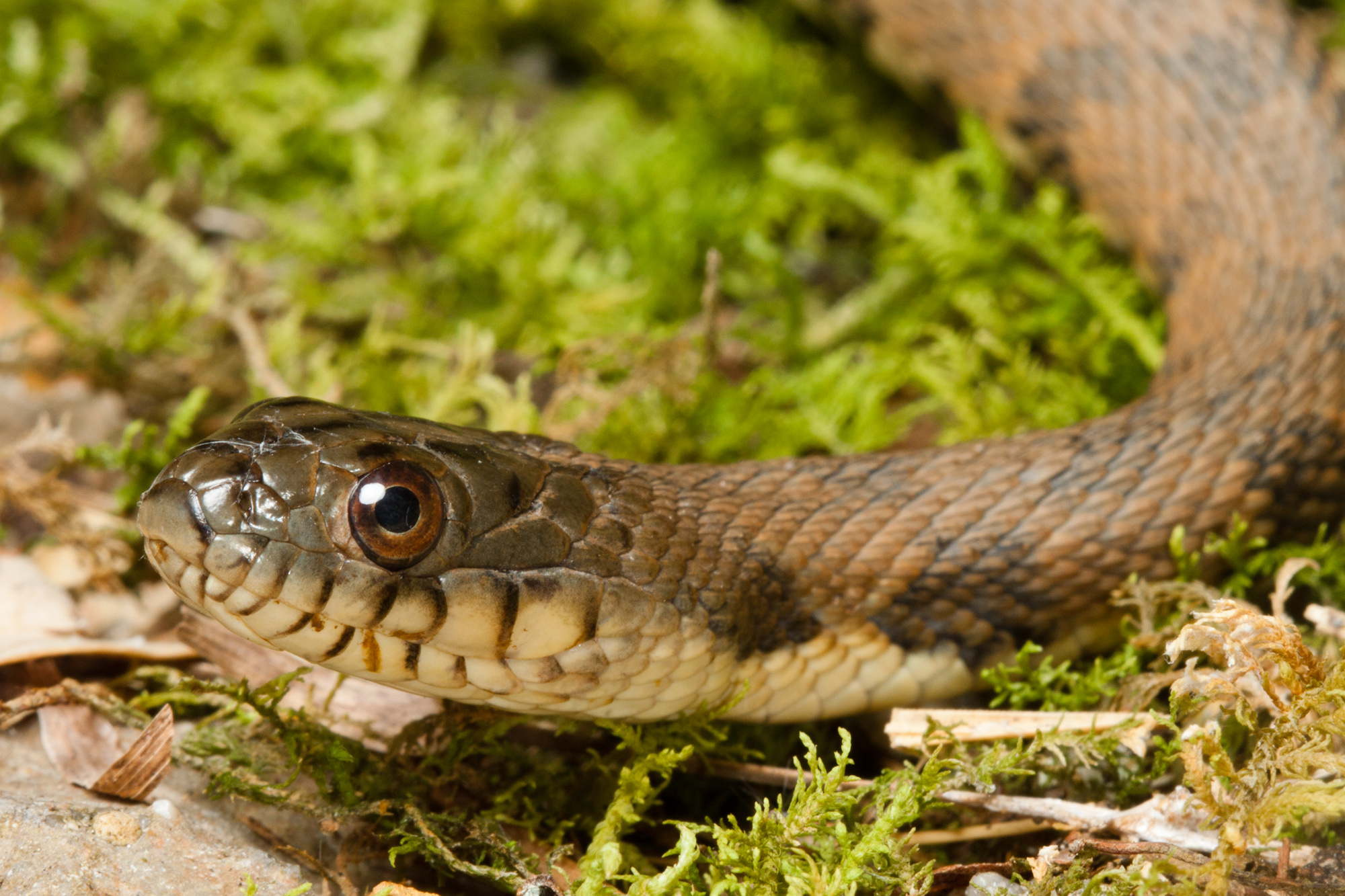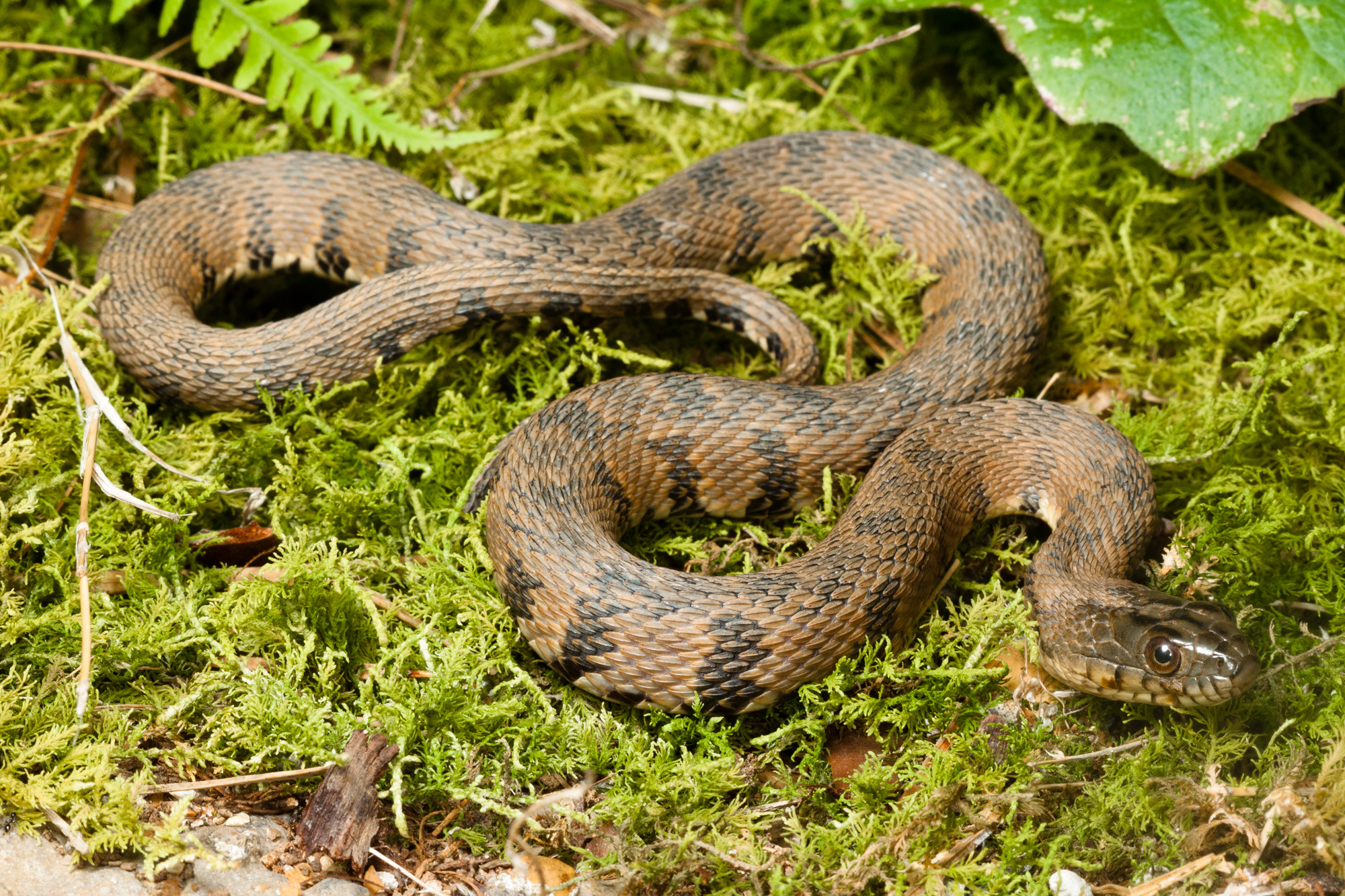Diamond Backed Water Snake
Nerodia rhombifer, commonly known as the diamondback water snake, is a species of nonvenomous natricine colubrid endemic to the central United States and northern Mexico.
Diamondback water snakes are predominantly brown, dark brown, or dark olive green in color, with a black net-like pattern along the back, with each spot being vaguely diamond-shaped. Dark vertical bars and lighter coloring are often present down the sides of the snake. In typical counter colored fashion, the underside is generally a yellow or lighter brown color often with black blotching. Their dorsal scales are heavily keeled, giving the snake a rough texture. The dorsal scales are arranged in 25 or 27 rows at midbody. There are usually 3 postoculars.
Adult males have multiple papillae (tubercles) on the under surface of the chin, which are not found on any other species of snake in the United States. They grow to an average length of 30-48". The record length is 69". Neonates are often lighter in color, making their patterns more pronounced, and they darken with age.
The diamondback water snake is one of the most common species of snake within its range. It is found predominantly near slow moving bodies of water such as streams, rivers, ponds, or swamps. Its primary diet is fish and amphibians, specifically slow fish, crayfish, amphiumas (eel-like salamanders), frogs and toads. When foraging for food they will hang on branches suspended over the water, dipping their head under the surface of the water, until they encounter a fish or other prey. They are frequently found basking on these branches over water, and when approached, they will quickly drop into the water and swim away. If cornered, they will often hiss, and flatten their head or body to appear larger. They only typically resort to biting if physically harassed or handled. Its bite is known to be quite painful due to its sharp teeth meant to keep hold of slippery fish. Unfortunately, this defensive behavior is frequently misinterpreted as aggression and often leads to their being mistaken for the venomous cottonmouth (Agkistrodon piscivorus), with whom they do share habitat in some places. The brown/tan coloration and diamond-shaped pattern also causes these snakes to be mistaken for rattlesnakes, especially when encountered on land by individuals unfamiliar with snakes.
The diamondback water snake is found in the central United States, predominantly along the Mississippi River valley, but its range extends beyond that. It ranges within the states of Texas, Oklahoma, Kansas, Iowa, Louisiana, Arkansas, Missouri, Illinois, Indiana, Tennessee, Mississippi, Georgia, and Alabama. It is also found in northern Mexico, in the states of Coahuila, Nuevo León, Tamaulipas, and Veracruz.
While not endangered or threatened, their main threat is human ignorance. Diamondback water snakes are often mistaken for cottonmouths or rattlesnakes and are killed out of fear. In actuality, diamondback water snakes (and other species of water snake) are far more common than the venomous snakes in their range, especially in areas that are frequented by humans.
Like other Nerodia species, diamondback water snakes are ovoviviparous. They breed in the spring and give birth in the late summer or early fall. Neonates are around 8–10" in length. Though their range overlaps with several other species of water snake, interbreeding is not known.

By Natalie McNear. CC BY-NC 2.0, via Flickr

By Natalie McNear. CC BY-NC 2.0, via Flickr
